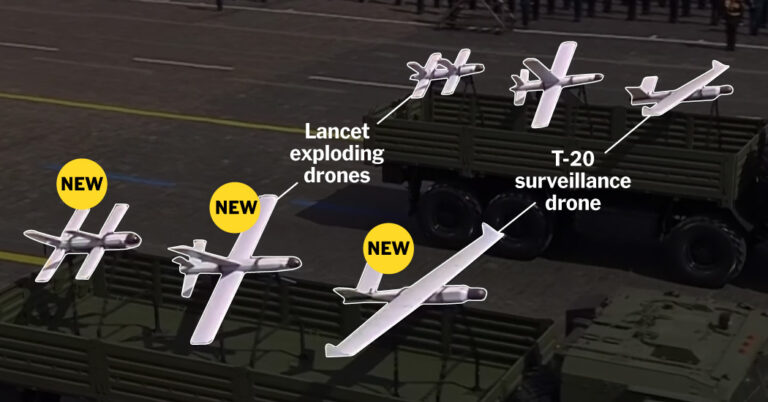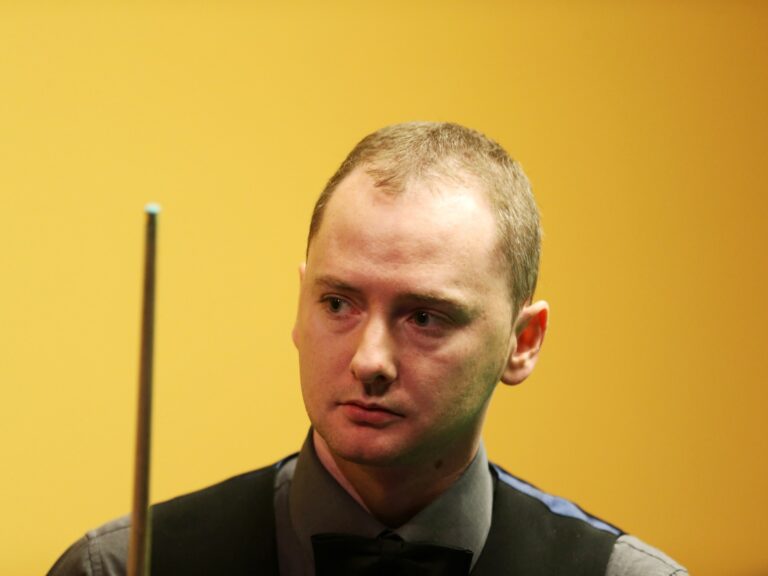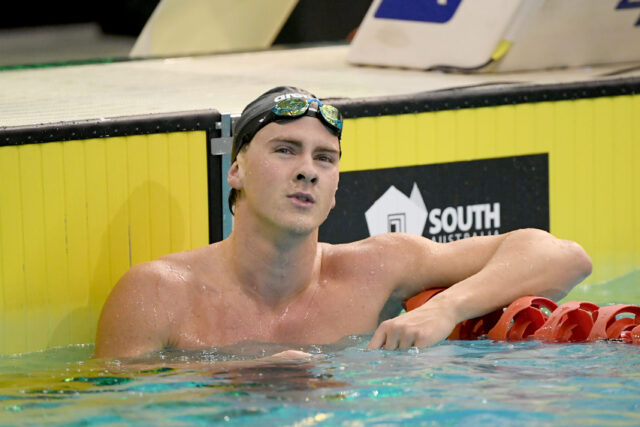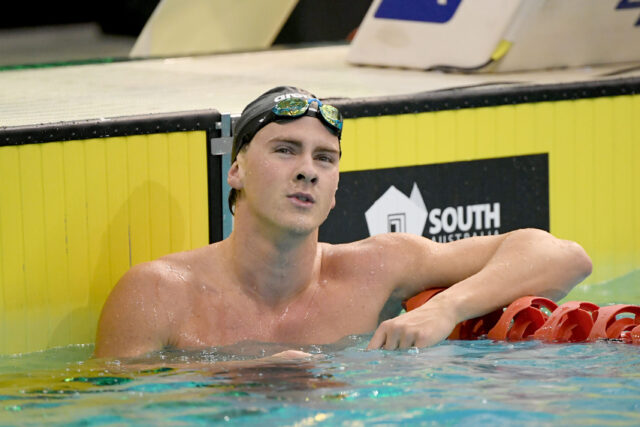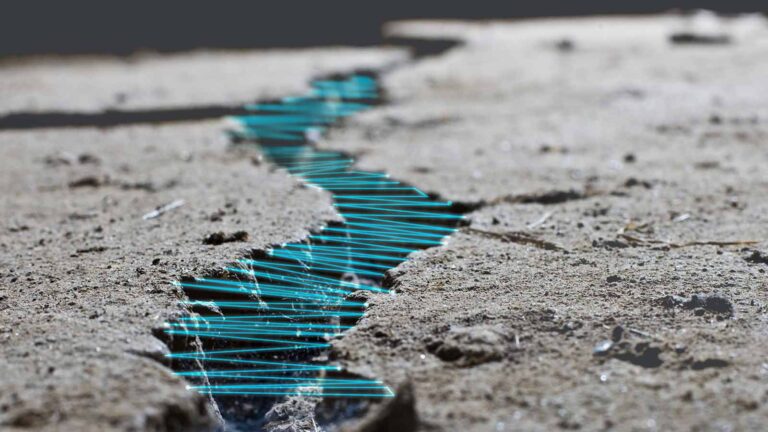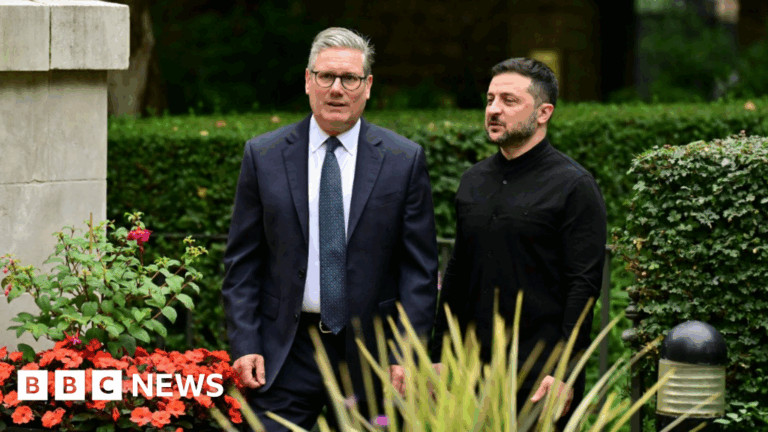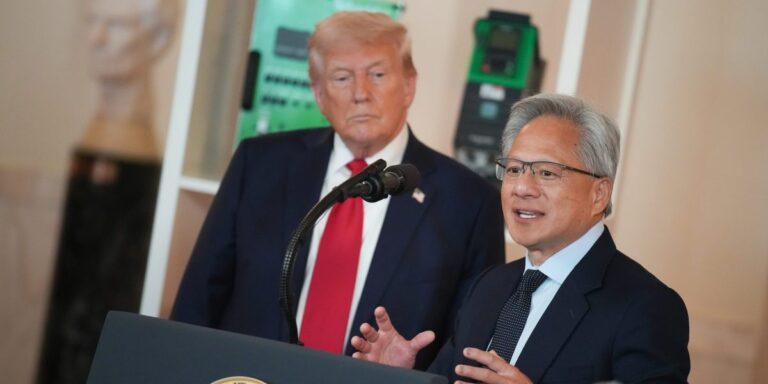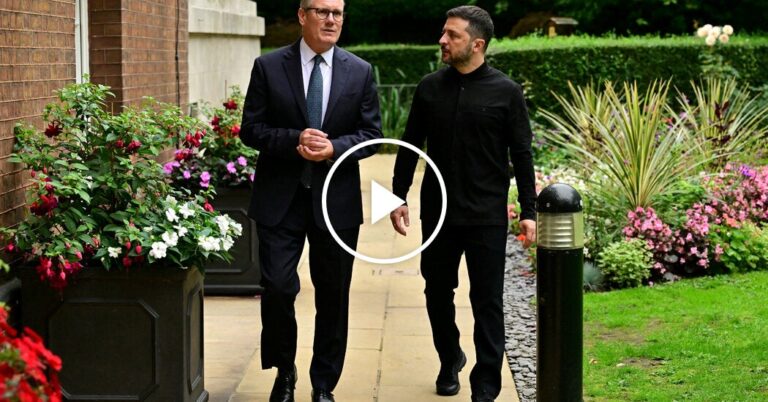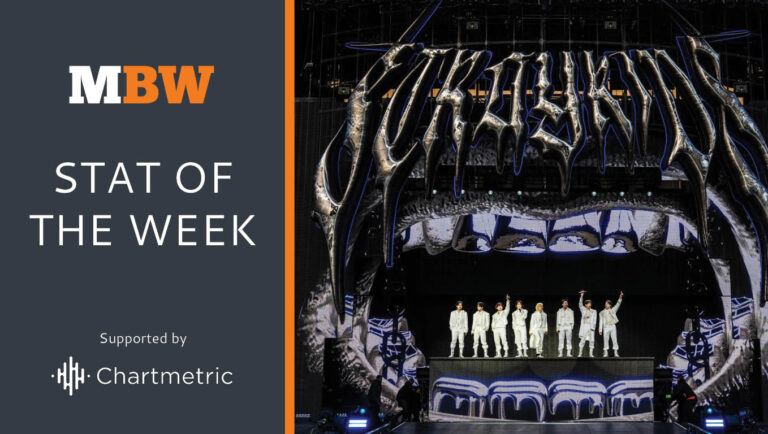Vladimir V. Putin exuded confidence. Sitting back, surrounded by foreign dignitaries, the Russian president explained the futility of Ukrainian resistance. Russia had the advantage on the battlefield, as he saw it, and by rejecting his demands, Ukraine risked even more for peace.
“Keep at it, then, keep at it. It will only get worse,” Mr. Putin said at an economic forum in June, as he taunted the Ukrainian government. “Wherever a Russian soldier sets his foot, it’s ours,” he added, a smirk animating his face.
His self-assurance is born out of the Russian military’s resurgence.
In the depths of 2022, his underequipped forces were disoriented, decimated and struggling to counter Ukraine’s hit-and-run tactics and precision-guided weapons. Instead of abandoning the invasion, Mr. Putin threw the full strength of the Russian state behind the war, re-engineering the military and the economy with a singular goal of crushing Ukraine. In his push, the country revamped recruitment, weapons production and frontline tactics.
This is now a war of attrition favoring Russia, which has mobilized more men and arms than Ukraine and its Western backers. While their casualties are mounting, Russian forces are edging forward across most of the 750-mile front, strengthening Mr. Putin’s resolve to keep fighting until he gets the peace deal he wants.
Ukraine and its allies hope to hold out long enough to exhaust Mr. Putin’s forces. In World War I, the German Army had made it within about 40 miles of Paris before it collapsed. The German Empire capitulated and disintegrated months later.
There are warning signs for Russia. Its elite infantry units have been wiped out. Its military plants depend on foreign components and dwindling Soviet-era stocks. Its economy shows cracks.
Mr. Putin figures that he can manage the wartime pressures longer than Ukraine and can secure a peace deal that would ensure his legacy. He has repeatedly demanded four regions that Moscow has claimed to have annexed and sought a deal that blocks Ukraine from joining NATO and limits the size of its military.
If talks with President Trump in Alaska this week don’t lead to such a deal, Mr. Putin has signaled that he is willing to fight on, using force to achieve what diplomacy cannot.
“I have stated Russia’s goals,” Mr. Putin told reporters this month when asked if Russia was willing to compromise. “These conditions undoubtedly remain the same.”
Recruitment
Speaking by phone from a hospital, a Russian sergeant named Vladislav rattled off the money he was waiting to receive after he lost his foot storming Ukrainian trenches in January.
The equivalent of $6,400 from the local governor; $28,300 from the state insurance company; $47,000 from the defense ministry.
Then there’s the veteran’s monthly pension of $1,100, enough for him to retire in his hometown in western Russia at age 33. “You don’t even need to work there with this money,” said Vladislav, who like other Russian soldiers interviewed, asked to publish only his first name for security reasons.
Vladislav said his monthly frontline salary had already allowed him to improve his family’s living standards in ways he said would have been impossible in his previous job, at a sunflower oil plant where he earned $300 a month.
He is building a house for his parents and upgrading his and his girlfriend’s cars. He is focused on providing a future for his children. “Whatever they needed, I bought it for them,” Vladislav said in July. “Whatever they required, I gave it to them.”
Hundreds of thousands of well-paid volunteers like Vladislav have transformed the Russian Army.
Russia’s early military disasters in 2022 decimated the ranks of career servicemen at the core of the invasion, and the Ukrainians exploited the weakness. A September counteroffensive of that year broke through Russian lines, nearly thwarting the invasion.
Mr. Putin took drastic steps to avoid defeat. He announced Russia’s first mobilization since World War II, officially drafting 300,000 men. He ramped up presidential pardons and payments to enlisted convicts, bringing an estimated 100,000 men from Russian jails to the front.
These measures stabilized the battlefield but at a political cost. The draft caused the biggest spike of social discontent in Russia in years. Hundreds of thousands of men fled the country.
But the success of the prison campaign gave the Kremlin a blueprint for a less coercive recruitment strategy, one based on money and appeals to manhood.
The government significantly raised soldiers’ salaries, introduced lucrative sign-up bonuses, and rolled out myriad other financial benefits. Kremlin propaganda presented military service as a unique chance for men at the margins of Russian society to show their worth by becoming breadwinners.
Today, Russia recruits about 1,000 soldiers a day. The figure has stayed broadly stable since 2023, and it is about twice as high as Ukraine’s.
Russia has consistently recruited about 1,000 soldiers per day
Russia’s recruitment strategy has depended on the country’s economic resilience. Even under the most comprehensive sanctions in modern history, Russia continues replenishing its war chest from exports of oil, natural gas, coal and gold.
The reliance on volunteers has benefited Mr. Putin politically. Middle-class Russians have largely tuned out the war as fears of a general draft have receded, removing the biggest threat of protests.
“The larger the payout, the less sympathy fallen or injured soldiers receive from society, and the less likely are the protests against the war,” said Janis Kluge, a Russia expert at the German Institute for International and Security Affairs.
Russia’s ministry of defense did not respond to a request for comment.
The military’s strong recruitment masks underlying problems.
Many of Russia’s best soldiers were killed early in the war. About 230,000 Russian soldiers have died since the invasion, according to estimates based on obituaries collected by the independent Russian news outlet Mediazona and BBC News Russian.
Their replacements are older, with less military experience. The median age of a Russian soldier killed in Ukraine in the first months of the war was about 28. It rose to 38 by August of this year, according to Mediazona.
“It was riffraff: the homeless from train stations, alcoholics, men running from the law,” said another Russian soldier, Vladimir, describing his enlistment at a large Moscow recruitment center in 2024. “The health check was fictional.”
The shrinking recruitment pool means that regional officials have to keep increasing payments to meet enlistment quotas, straining local budgets and destabilizing the broader economy.
The northern region of Mari El has spent more paying bonuses to new recruits this year than it has on health care, according to an analysis of Russian budget data by Mr. Kluge, the Berlin-based analyst.
Production
Far from the battlefield, Russia has been racing to produce more weapons, ammunition and vehicles than Ukraine and its Western allies.
The goal is to outlast the enemy through superior industrial might — and Russia has gone full throttle.
Mr. Putin has drawn on foreign partners, including Iran, North Korea and China, as well as a vast Soviet-era network of arms factories, to turbocharge the supply of everything from drones to missiles to tanks. He has sharply raised military spending, despite economic risks, to more than a third of the federal budget.
Ukraine has received about $70 billion-worth of military equipment from its own allies in Europe and the United States, but the West hasn’t mobilized its industrial base in the same way as Russia. Kyiv has also significantly increased domestic production, just not at the same scale; Russia’s defense budget this year is about $170 billion, more than three times Ukraine’s.
To bolster production, Mr. Putin has showered military factories with subsidized loans. He has changed labor laws to usher in night, weekend and holiday shifts. He has tapped vocational schools, foreign countries and even prisons as sources of labor. And he has moved swiftly, with top-down control, thanks to Russia’s autocratic system and a defense sector still largely owned by the state.
Perhaps no effort has drawn more attention than the drone plant in Yelabuga, a city 620 miles east of Moscow in Tatarstan. There, a regional lawmaker has repurposed an idling “special economic zone” created for Western investors in 2005 to manufacture a Russian version of Iran’s Shahed attack drone, initially with Tehran’s help.
Its founder, the lawmaker Timur Shagivaleev, claims that Yelabuga is now the largest military drone production facility in the world. “We’re witnessing a technological revolution,” Mr. Shagivaleev told Russian state television in July. “Warfare is becoming unmanned.”
The plant did not respond to requests for comment.
In the state television program, Mr. Shagivaleev wore a jumpsuit with an arm patch of a Soviet flag as he walked through rows of black drones standing upright along white walls. The scene matched the aesthetics of the early Star Wars films, albeit with reproductions of Stalinist propaganda on display.
One of the posters read: “Kurchatov, Korolev and Stalin are in your DNA,” a reference to the Soviet scientists credited with Moscow’s atomic bomb and rocket programs, and the dictator who raised industrial production through mass terror.
To fill its shifts, Yelabuga has looked for workers in local schools and abroad. When Ukraine attacked the plant with its own drones in April 2024, Russian state news reported that citizens of Russia, Kyrgyzstan, Sri Lanka, Zimbabwe, Rwanda, Congo, Kenya, Nigeria and South Sudan were among the injured.
A technical college associated with the facility trains teenagers in specialist tasks. “The pupils are called in after the ninth grade, and after college, they are invited to stay,” said the presenter of the state television documentary.
Yelabuga’s scientists have reengineered the Iranian models to improve them. The Russian version, the Geran-2, flies higher and carries more explosives. It is now Russia’s main weapon in its bombing campaign against Ukrainian cities.
Russia has tripled production of the Geran-2 since 2023 and makes about 80 a day, according to The Royal United Services Institute, a London-based research organization with ties to the British defense ministry, known as RUSI.
Russia has used its increased supply of drones to drastically escalate its bombing campaign, launching an average of 200 drones every night in July and once topping more than 700. Early in the war, Russia’s biggest attacks included 40 drones, according to RUSI.
Russian strike drones fired at Ukraine per week
Russia has also breathed new life into underused Soviet defense factories to bolster conventional weapon production and modify Communist-era equipment.
Last year, Russian industry produced more than 1.3 million standard artillery rounds, up from 250,000 in 2022, according to RUSI. Production of Iskander short-range ballistic missiles, one of Russia’s main precision bombing weapons, nearly tripled last year from 2023 to reach 700, the group estimates.
Russia has also found a way to upgrade its Soviet-era “dumb bombs” into guided munitions. Production of upgrade kits has grown from a few thousand units in 2023 to a projected 70,000 this year, said the group, which bases its estimates on publicly available data and information obtained from Western and Ukrainian intelligence sources.
Russia still needs imported components for its latest weapons, leaving it vulnerable to sanctions and shifting geopolitical alliances. Satellite imagery also indicates that Russian stocks of Soviet military equipment are running out, forcing the country to rely on the slower and more expensive process of building new tanks and armored vehicles.
“They are triaging just the same way the Ukrainians are,” said Max Bergmann, an analyst at the Center for Strategic and International Studies in Washington. “It’s just that at Russia’s scale, they are much bigger.”
Tactics
By late 2023, the Russian Army had regained its footing but continued to underperform. Endemic corruption and irregular supplies hobbled offensives and bred discontent.
“The supply situation was disgusting — practically nothing was given out,” said Anton, a Russian soldier, describing early fighting. “We had to buy everything.”
In May 2024, Mr. Putin decided to act. He fired the old friend who was his longest-serving minister, Sergei K. Shoigu, from his post atop the defense ministry. Russian prosecutors began jailing Mr. Shoigu’s associates on corruption charges.
Mr. Putin chose an unusual replacement: a stonefaced economist without military expertise named Andrei Belousov.
The new defense chief traded the medal-studded parade uniforms of his predecessor for an austere business suit. He set out his technocratic goals in monotonous readouts. Improve supply chains, introduce new technology, and deepen the army’s ties with businessmen and scientists — all with the aim of giving Russia a decisive advantage.
Russian soldiers said in interviews that they saw a significant improvement in the supply of first-person view drones and other advanced weapons after Mr. Belousov’s appointment, allowing them to experiment with new tactics.
In one of his first public initiatives, in August of last year, Mr. Belousov created Russia’s first specialized drone unit, Rubicon. He lavished the project with money, staffed it with the army’s best drone operators, and connected it with drone inventors and manufacturers.
Armed with more powerful drones in larger numbers, Russian forces began systematically targeting Ukrainian supply lines, making it harder for Ukrainian forces on the front to replenish ammunition, receive reinforcements and evacuate their wounded.
Under Mr. Belousov, the military changed other tactics. It improved communication between units and it tested, with varying success, the use of motorcycles, all-terrain vehicles and electric scooters.
In this summer’s offensive, Russia is experimenting with sending small groups of camouflaged soldiers deep inside enemy lines, where they hide in abandoned buildings or ravines, before mounting coordinated attacks. This played out recently in the battle for the eastern Ukrainian city of Pokrovsk. The head of the Ukrainian Army, Gen. Oleksandr Syrskiy, referred to the tactic this month as “total infiltration.”
Russia’s new approaches proved effective in Vuhledar, a major Ukrainian stronghold in the eastern Donetsk region.
Early in the war, Russia had sent armored columns to the town, with disastrous results, as videos show. Late last year, its forces changed tack, gradually occupying the fields on Vuhledar’s flanks over several months.
The move allowed Russian drone operators to get around the town and target Ukrainian supplies. When Russia then launched a general assault, Vuhledar fell in about a day. The defenders withdrew to avoid being trapped.
Russia is racing to erase Ukraine’s early advantage in drones, which are now accounting for the majority of deaths in the war.
In February 2025, Rubicon, the elite drone unit, was dispatched to Russia’s Kursk region, where Russian forces and their North Korean allies were struggling to push back a Ukrainian incursion.
The unit introduced a new generation of Russian drones guided by a thin optical cable, which makes them immune to signal jamming and invisible to drone detection systems. Rubicon’s drones would lie on roadsides behind the enemy lines undetected for hours, before ambushing anything that moved.
“They destroyed all the logistics,” recounted a Ukrainian special forces soldier who, like others, for security reasons identified himself by his call-sign, Cap.
When the Russians attacked the Ukrainian positions in Kursk from all sides in early March, the defenses buckled.
“In some sections, I can say that the front had collapsed,” said a commander of a Ukrainian paratrooper platoon with the call sign Beard.
Mr. Belousov is expanding Rubicon, pledging to build an entire new branch of the Russian military, the Drone Forces, by October. After helping reclaim Kursk, Rubicon has been dispatched to Donetsk, the focus of Russia’s current offensive.
“The game changed when they came here,” Rebekah Maciorowski, an American military medic fighting for Ukraine in Donetsk, said in an interview in June, describing the pressure the Ukrainian military faces in the area. “The game changed drastically.”
Methodology
Videos at the beginning of the article were compiled from Telegram channels that regularly post drone footage of frontline combat, often from either Ukrainian or Russian military units, including @strikedronescompany, @combat_ftg, @nm_dnr, @icpbtrubicon, @supernova_plus, @voin_dv and @ratnik2nd. While these videos are often shared for propaganda purposes, they also help illustrate shifting tactics and how new battlefield technologies are reshaping the war. Videos are from 2023 onward, after first-person view drones, which were used to capture most of the footage, became widely used on the battlefield.


